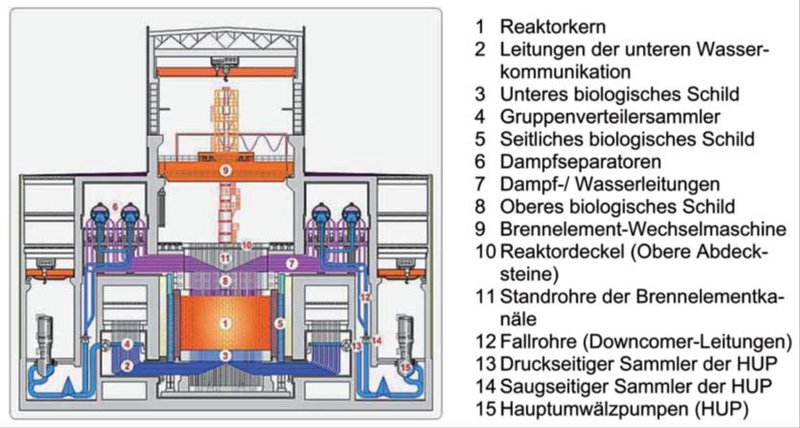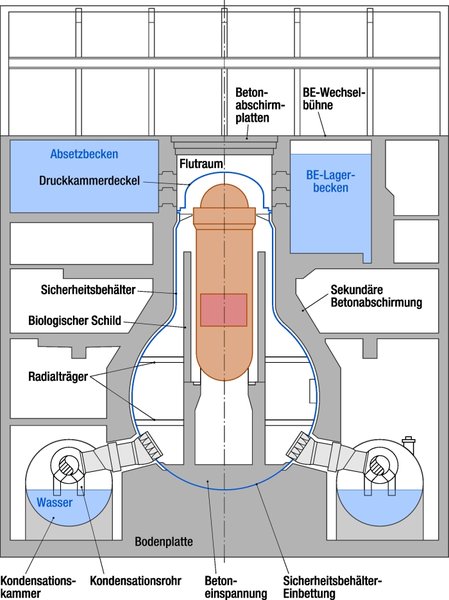Progressions of the Accidents at Chernobyl and Fukushima Dai-ichi
One very crucial difference between the two accidents concerns the structural designs of the reactors. The reactor at Chernobyl was constructed in such a way that, under certain circumstances, the nuclear chain reaction could increase in an uncontrolled manner. This is exactly what happened on 26 April 1986 during a test: within seconds, the reactor attained several hundred times its intended maximum power. Water from the cooling circuit and other material vaporised abruptly, leading to an explosion that destroyed the reactor and the reactor building. Another factor was that, due to its design, the reactor contained large quantities of graphite, which then ignited. In this type of reactor, the graphite performs the function of a neutron moderator, which is necessary in order to keep the chain reaction going. The graphite fire continued to burn for several days; its heat propelled substantial quantities of released radioactivity to great heights, thereby causing the widespread distribution of radioactive substances.
At the Fukushima Dai-ichi site, with its six “light water-reactor units”, all the reactors (1 to 3) that were running at the time of the severe earthquake on 11 March 2011 were shut down by retracting the control rods, so the nuclear chain reaction was interrupted. However, the reactor cores (consisting of uranium fuel assemblies) subsequently carry on generating what is known as decay heat; although this reduces continuously, it accounts for a proportion of the full reactor power in the single-digit percentage range at the outset. The external power supply was destroyed by the earthquake, and the emergency diesel power generators available for such cases only functioned for about one hour before the tsunami stopped them from operating. This left nothing other than battery-supported auxiliary systems, which were only able to guarantee makeshift cooling of the reactors for a few hours up to a maximum of about one day. Mobile pumps were used in an attempt to feed water from outside into the reactors, but this only happened at a very late stage or (initially) met with only partial success. Consequently, reactors 1 to 3 gradually continued to heat up again, the water remaining in the reactors began to vaporise and finally, the reactor cores (or at least their upper sections) were no longer covered by water. This further heating led to core damage and also − probably − to partial melting of the reactor cores. The vaporised water, and also the hydrogen gas generated by the chemical reactions in the overheated core, caused a sharp increase in pressure in the reactors. In order to prevent bursting of the pressure vessel and the containment, the pressure was vented via valves. Gas containing hydrogen subsequently reached the outer parts of the reactor building. The upper sections of the reactor buildings of units 1 and 3 were destroyed by hydrogen explosions. Moreover, damage must be assumed to the containment around the reactor of unit 2, and possibly to that of unit 3 as well.
Fuel assemblies removed from the reactors were stored in water pools in the upper sections of the six reactor buildings. In the absence of ongoing cooling, the spent fuel pools also heated up (within days or weeks, according to their loading) to such an extent that the water vaporised and the fuel assemblies were exposed. Before adequate cooling from an external supply of water could be restored via mobile pumps, the fully loaded pool of unit 4 overheated, entailing the formation of hydrogen which led to an explosion that also destroyed the upper section of the reactor building.



